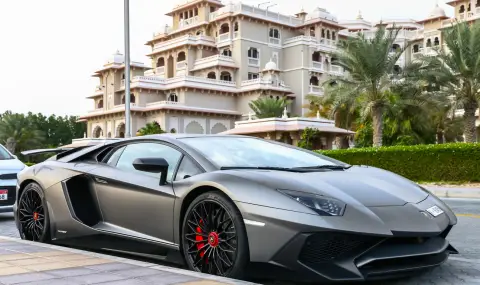Branded complexes are one of the fastest growing formats in luxury real estate. Every year, more and more famous brands create corporate residences in partnership with construction investors. And buyers are often willing to pay 30-40% more for such properties than for traditional homes.
Branded real estate is a separate category of residential properties that are developed with the support of a particular brand. According to the LonGrad agency, the largest market share - 31% is occupied by Marriott International, 10% - Four Seasons, 7% - Hyatt. There are also projects that arose as a result of cooperation between builders and non-hotel brands.
Design studios, fashion brands, car manufacturers - everyone is trying to break into this segment, sparing no effort and money. Versace, Porsche, Armani, Fendi, Nobu, Tonino Lamborghini (Dubai) and Pharrell Williams (Toronto) are just some of the newcomers to the hotel business with extensive experience in the luxury segment.
The brand is responsible not only for the design, architecture, layout of apartments and public spaces. The brand is responsible for managing the rental of the apartment stock, safety and service to residents and their guests according to the high international standards of 5-star hotel service.
It is believed that the first branded property was the Sherry-Netherland Hotel, which opened in the 1920s in New York. A century later, the number of such properties, according to international broker Exotic Property, has grown to 500,000.
The global demand for branded housing shows no signs of slowing down, according to the latest data from the consulting company Savills. The number of such projects is expected to increase by approximately 100% over the next 7 years. Currently, 740 projects have been completed, and another 790 are expected to be operational in 100 countries by 2031.
Benefits for real estate buyers in such projects:
* Hotel chains take care of all the maintenance of the properties.
* Owners are paid an income, which is often guaranteed.
* Various bonuses are provided, such as the right to stay in hundreds of other hotels in the chain.
“In addition to the number of projects increasing, their geographical presence is also growing, as operators and brands are actively exploring new areas“, commented Rico Picenoni, Head of Savills Global Residential Development Consultancy. “We predict that over the next 5 years, 60 new brands will enter the market and the industry will expand to five new regions, including Romania and Tanzania“, the specialist adds.
North America, the home of the sector, was the single most active region until 2015, when global activity fell to below 50%. By the end of the forecast period to 2031, the region's share is expected to decrease further to 25%.
The strongest growth in the sector over the next 7 years is expected to be in the Middle East and Africa, with a growth of 270%. Dubai remains the most active international market, followed by Miami, New York, Phuket and London.
In terms of market leaders, Marriott International has maintained its top spot since 2002, followed by Accor, Four Seasons and Hilton. Among hotel brands, The Ritz-Carlton leads, followed by Four Seasons, St. Regis and Rosewood. Among non-hotel brands, the market leader is YOO.
Hotel brands still dominate the sector, accounting for 81% in 2023, with 2/3 of them in the luxury segment. Non-hotel-branded projects account for 19% of the market, but Savills expects this share to increase to 21% by the end of 2024.
Detailed statistics on average property prices in Bulgaria by city and neighborhood can be seen HERE
